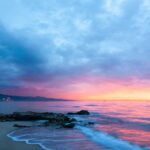Gratitude and tranquility may be yours when you stop being a bystander and start taking charge of your life.
Would you wish to do away with ill luck, anxiety, grief, or rage and be lucky, living confidently, peacefully and happy?
And if you are thinking of stopping reading here and looking for something else or searching the Internet for the answer. I challenge you to go away now wondering if this really works or if you spend at least half an hour looking for the answer yourself, instead of reading a couple more minutes and finding it here.
I just want to share this easy method that benefited me and can assist you too. All you need to do is to memorize four words and carry them with you all the time:
But what do they imply and how are they used?
What benefits do they bring?
Please allow me to first clarify that it is a simple technique, but a difficult one to pull off.
Table of Contents
The practice of Buddhist concepts in modern life
Buddhism, according to Soka Gakai, is based on the premise that everyone has the capacity to alter their suffering at any given time. A basic law that keeps the universe going is inseparable from us, so we have this power.
Nichiren Daishonin, a Japanese Buddhist monk who lived in the 13th century and whose teachings are the foundation of the Soka Gakkai International (SGI), was the first to recognize this global rule or principle and name it Nam-myoho-renge -kyo
He paved the road for all people to access the underlying power of this universal law through the Buddhist practice he invented (the chanting of Nam-myoho-renge-kyo). By reciting daimoku with sincerity and conviction, we are able to feel the delight of being able to release ourselves from suffering at the most fundamental level.
All free people
A 2,500-year-old Indian Buddhist named Shakyamuni was the first to discover this law because he hoped to find ways to alleviate the unavoidable sorrows of life for all individuals, regardless of their circumstances. Various Buddhist sutras preserve Shakyamuni’s teachings on awakening for future generations. The Lotus Sutra represents the pinnacle of these teachings. Myoho-renge-kyo is the Japanese translation of the “Lotus Sutra.”
It was during the turbulence of the 13th century in Japan that Nichiren Daishonin realized that the Lotus Sutra given by Shakyamuni included this basic law and was succinctly described in the term Myofo-renge-kyo. The Daishonin defined the sutra’s title as “the name of the Law” and developed the practice of chanting Nam-myoho-renge-kyo in the pragmatic environment so that everyone may focus their hearts and thoughts on prayer and manifest its transforming power into reality.
A Profound meaning of Nam Myoho Renge Kyo
The word “nam” comes from the Sanskrit word “namas,” which literally translates as “devotion” or “dedicating one’s life.” A commitment to accept and manifest one’s inner Buddha-nature is made by reciting the mantra Nam-myoho-renge-kyo as a declaration of determination to do so.
The various Chinese letters that make up the phrase Myoho-renge-kyo express the most important aspects of this law in their own way. In Japanese, the word myo may be rendered as “mystic” or “amazing,” while the word ho means “law.” The word myo is dubbed “mystic” mainly because it is difficult to grasp.
What precisely is it that is tough to comprehend?
Normal people who have been victims of illusion and suffering, but have begun to awaken to the fundamental law in their own lives and bring forth wisdom and compassion, and who, realizing that they are Buddhas, are able to solve their own problems as well as the problems of others, have gained widespread respect.
Renge, which means “lotus flower”
The lotus flower is beautiful and sweet, it thrives in muddy water yet remains spotless. In the same manner, the beauty and dignity of our humanity come to the fore in the midst of the miseries of everyday existence.
A unique feature of this flower is the simultaneous production of both flowers and fruits. In this way, the “simultaneity of cause and effect” concept is illustrated. We do not have to wait until we are flawless before revealing the power of the Mystic Law inside our lives.
Finally, “sutra” is the direct translation of the term “kyo.” The Chinese character kyo also offers the sense of a “line”: when a cloth is created, first the vertical lines are put in place. They reflect the core truth of existence, the sturdy structure through which the horizontal lines are weaved. The horizontal lines that make up the pattern fabric’s color and variety show how many different things we do each day.
The “fabric of our life” is made up of the fundamental and eternal truth as well as the hectic reality of our everyday life, which is distinct and diverse in all its complexities.. A life with just horizontal axes is doomed to failure.
Reciting “Nam Myoho Renge Kyo” is an act of Faith
Because of this, Nichiren Daishonin emphasizes the need for trust in his writings: “The Lotus Sutra teaches that one may “get entry only via faith,” because the Buddha honestly discards proper measures in it.” (…) In this sense, trust is the primary condition for entering the path of the Buddha.
Because it is not a mysterious term endowed with mystical power, reciting Daimoku is an act of confidence in one’s own inherent potential. In other words, the underlying tenet that individuals who live regular lives and put up persistent efforts to better themselves and those around them will be successful is what Nam – myoho-renge-kyo is all about.
The recitation of Nam-myoho-renge-kyo aims to unveil the pure and essential vital energy, recognizing the dignity of our life as a common person, and equal to everyone, and entitled to a happy existence.
How to Chant “Nam Myoho Renge Kyo”
The mantra Nam-Myoho-Renge-Kyo, suggests us to surrender and surrender to the Name of a Higher Power and to the Mystic Law. That blooming like a lotus, makes us reborn and feel happy, grateful, full of energy, life, and youth. When we dedicate ourselves to that One Whole of which we are a part, our sufferings are eliminated.
You can repeat the mantra Nam-Myoho-Renge-Kyo for five minutes, or for only ten times, at dawn to prepare yourself to accept any event as an opportunity for growth and learning, and before going to sleep as gratitude for all the teachings that the day has given us.
“Nam Myoho Renge Kyo” Benefits:
You may discover thousands of Web pages where Buddhist monks, meditation gurus, and even Tina Turner talk about the advantages. But let me tell you about my experience utilizing this mantra.
I noticed it some time ago. I had just lost my job, had marriage problems, and my health was not good at all. Even before the pandemic of 2020! When I was trying to find a method to cope with my troubles, I learned about the way it helped Tina Turner deal with hers.
The narrative was so straightforward that it clicked and the sentences lingered in my head. Later, I tried to figure out what it meant, but after consulting for many hours, I decided to just do it. I printed off two copies and put one in my wallet, and one by the door to glance at when I went out and came home.
Since then, every time I leave the house, I regard it as a chance to learn from the events of the day and to return home appreciative at night. If something happens throughout the day and my brain goes into automatic response mode, I stop and recall the card in my wallet.
Because of this, I may utilize the phrase to help me stay cool when confronted with difficult situations, the unexpected, or when I’m suffering from cynophobia (a fear of dogs that is distinct from xenophobia, or an aversion to people from other countries).
Other benefits I experienced are:
- It helps me to feel grateful for everything that happened during the day.
- It helps me control anger and gives me confidence before any presentation at work.
- It gives me the ability to cope better with problems and difficulties.
- Overcome fear, stress, and phobias.
- I see things more clearly to find a win-win solution to a conflict.
- At night, before going to sleep, I feel love, happiness, joy, and peace.
- I change any submissive behavior and avoid saying yes or doing something I don’t want to do, to avoid upsetting others, just for fear of hurting their feelings.
- It allows me to relax my body and mind after any stressful situation.
“Nam Myoho Renge Kyo” Audio with Lyrics
Conclusion:
Imagine the great advantage you would obtain only by repeating Nam-Myoho-Renge-Kyo, morning and evening, even if only 10 times.
The practice of reciting the sutra in the morning and evening is not an obligation, it is a privilege.
Nichiren does not mention anything about the particular number of times or amount of time we should recite the sutra, he simply emphasizes that it depends totally on the consciousness of each individual, but it is vital to do it a bit every day.
Buddhism exists to free people, not to limit them. So, we should try to live each day so that we can keep improving ourselves by training in the morning and at night.











